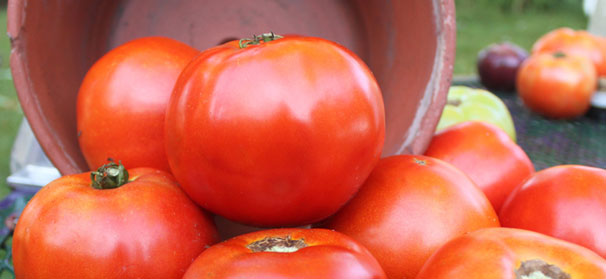

Oct 19, 2012Healthy living and buying local still driving seed trends
When it comes to vegetable seed trends, the story continues to be buying locally grown fruits and vegetables and knowing where your food comes from.
Food trends expert Phil Lempert said that consumers have become increasingly more interested in knowing where their food comes from. This puts the spotlight on growers and elevates them to almost celebrity status, he said.
“Last year, we saw sales flourish among grocery retailers who jumped on the movement among consumers to ‘buy local,'” he said. “In this age of transparency, interest in the farm-to-fork journey has grown considerably, inspired in part by food-safety scares and, more importantly, a desire to know how the food we are serving our families is being produced.”
This drive for knowledge of where food is coming from is pushing consumers to shift from canned vegetables to lightly processed and fresh produce. The increasing health- and quality-conscious attitude has led to continuous growth in vegetable consumption.
The demand has pushed researchers to harness the power of technology and metabolite analysis to breed for vegetable varieties with specific flavor, health and nutritional attributes for the benefit of consumers, said Syngenta representative Dana Hartong. One growing area of this market is in snack foods.
“Angelle, a snacking tomato variety recently introduced by Syngenta, is an excellent example of innovative introductions for the fast-growing ‘healthy snacking’ market,” Hartong said. “Along with consistently great flavor, Angelle has a higher flavonoid and lycopene content than comparable varieties.”
Increasing productivity
Another trend is decreasing acreage combined with the demand for highly productive growing. Growers have to meet demand by planting varieties developed to maximize potential, and they have to maximize land usage, according to a recent census of growing acreage done by USDA.
Last year, there were about 1.8 million acres of vegetables planted in the United States, including fresh and processed. Leading the nation in acreage was California, with 767,600 acres. Florida was next on the list with 204,400 acres, followed by Arizona at 116,900 and Georgia with 110,600, according to USDA.
Many states with smaller numbers of acres in production slipped or stayed the same for 2011. Texas dropped 4,000 acres from 2010 to 2011, with 62,700 acres in production last year. Michigan and New Mexico each dropped 2,000 acres, according to USDA.
While acreage in production has increased, available acreage has decreased, according to USDA – meaning that growers are putting more of their available land into production instead of acquiring new land. This trend is echoed by what seed producers are seeing.
The rising global population is pushing the industry to produce more food with fewer resources, Hartong said. Growers need access to varieties with improved resistance packages and maximum yield potential that produce high-quality crops. It is pushing companies like Syngenta to produce better products for growers.
“Although it is a challenge to develop varieties that meet the needs of growers from an agronomic perspective, retailers from a post-harvest perspective and consumers from an experience perspective, Syngenta invests more than $1.2 billion annually in research and development,” she said.
Scott walker, partner in Walker Bros. Seed Co., said he expects another strong asparagus season in 2013.
“As reported at the International Asparagus Symposium in 2009, asparagus acreage within the United States decreased by 57 percent from 2001 to 2009,” he said. “The world acreage for the same time frame decreased 23 percent (down by 142,336 acres). With the lack of asparagus acreage, the increased demand for locally grown food and consumers turning to healthier foods, I anticipate a strong demand for asparagus over the next several years.”
Celery growers will most likely be looking for heat-resistant cultivars, said Mathieu Ngouajio, a horticulturist with Michigan State University (MSU).
“These cultivars would be a strategy to limit the incidence of black streak disorder,” he said.
What drives the market?
Generally, growers respond to trends. They don’t often create them, said Ron Goldy, a horticulturist from MSU. Growers usually aren’t willing to spend money on something they might not be able to sell. The restaurant industry is where food trends generally start, and growers then respond to meet the need. Growers who sell at farmers’ markets are usually the first to adopt restaurant trends, he said.
What about the drought?
The drought that hit much of the country this season had some effect on this year’s crops, but shouldn’t have too much effect on trends for next year, Goldy said.
“Most vegetable growers have irrigation, so dry conditions are often welcome since it reduces disease pressures,” he said. “Weather conditions one year generally have little bearing on the next year. Growers generally play the averages.”
This season, about 80 percent of agricultural land experienced drought, which makes the 2012 drought more extensive than any since the 1950s, according to USDA. The drought rapidly increased in severity from June to July and persisted into August. As of Sept. 12, USDA had designated more than 2,000 U.S. counties as disaster areas, mainly due to drought.
By Derrek Sigler, Assistant Editor














